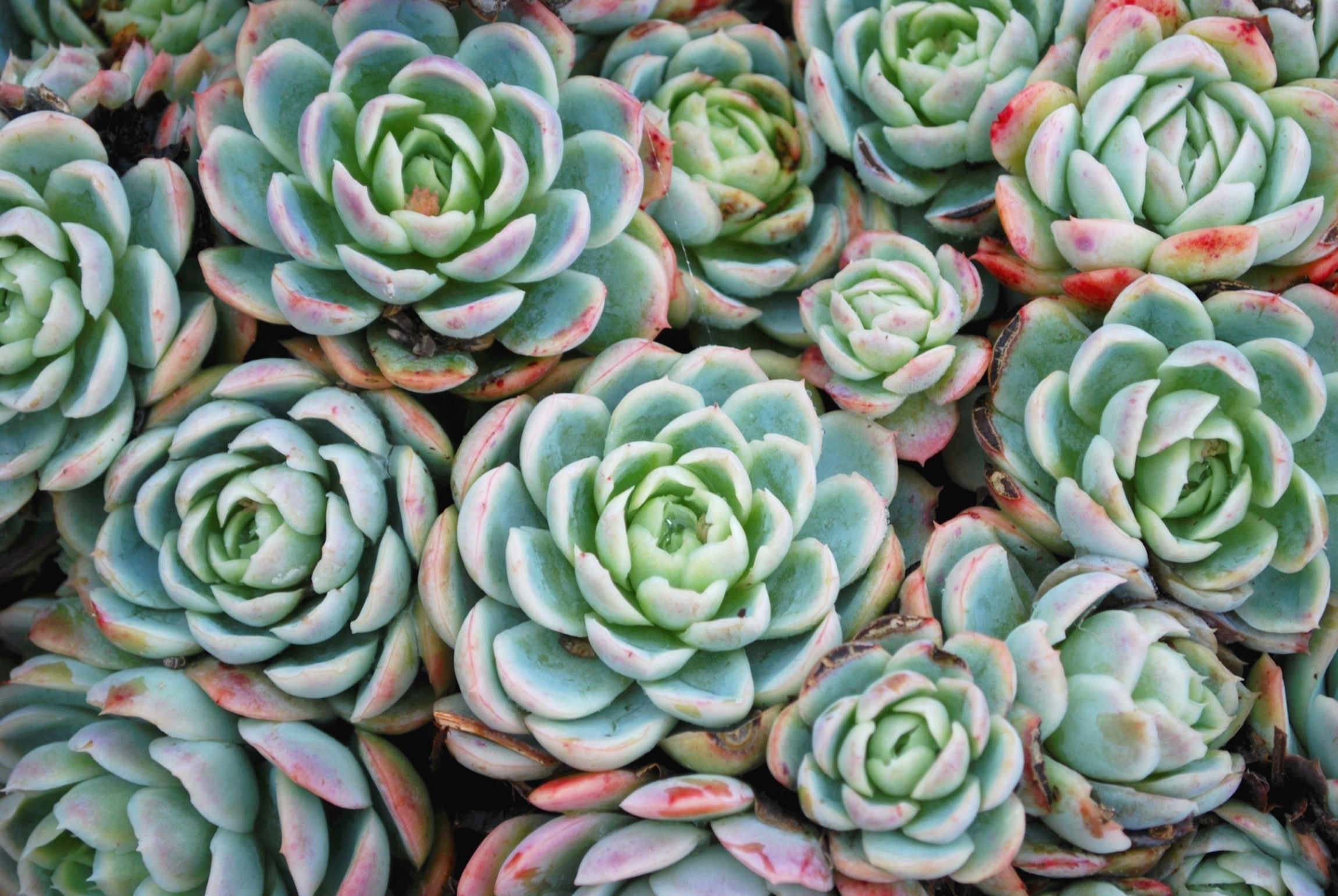Plant lovers love succulents for both their interesting leaves and their flowers, though the flowers are usually smaller or less interesting than the leaves.
You’ll also need patience as many succulents do not flower until they reach maturity. Some may even need to be coaxed to flower under the right environmental conditions.
Nevertheless, flowering succulents are a great addition to your indoor garden and a wonderful seasonal perk.
Flowers are universally loved for their beauty and fragrance. There’s just something special about seeing a plant burst into bloom. But did you know there are succulents that look just like flowers even when not in bloom? Their vibrant colors and unique shapes allow them to mimic flowers. Keep reading to learn all about these spectacular plants!
Why Succulents Can Look Like Flowers
Succulents have adapted to survive in harsh, dry environments To prevent water loss, they have thick, waxy leaves and stems This gives their foliage a plump, rounded appearance reminiscent of flower petals. Many also have compact rosette structures that look like floral centers. Bright pigments in their leaves can create the illusion of blooms. Reds, pinks, oranges, yellows, purples, and blues abound! When backlit by the sun, these colors glow as if they were actual flowers.
The diversity of the succulent plant world allows for limitless variations Through evolution and hybridization, forms have emerged that perfectly mimic flowers. Let’s look at some of the most stunning “faux flower” succulents you can grow!
Succulents That Look Like Roses
Roses are universally recognized symbols of love and beauty. Their layered spiraling petals unfurl with geometric perfection. Many succulents have evolved to copy this form. Here are some top picks
Echeveria
This large genus contains hundreds of species. Many develop tight rosettes of leaves with ruffled edges. These fan out like rose petals, often in vibrant pinks, reds, and oranges. Popular varieties include Echeveria ‘Perle von Nürnberg’ and Echeveria ‘Domingo’.
Aeonium
Like echeveria, aeonium form compact rosettes. But their leaves branch out from the center on long stems for a bushier look. Aeonium ‘Sunburst’ has yellow margins that make it look like a giant, sunny rose!
Sempervivum
Commonly called hens and chicks, sempervivum spread by forming offsets. The mother rosette generates miniature replicas of herself around the base. This gives the look of multiple blooms like a bouquet of roses.
Succulents That Look Like Lilies
Lilies have prominent stamens protruding from their centers. Many succulents mimic this shape. Here are some lily look-alikes:
Echeveria ‘Lilacina’
The ruffled, lilac-tipped leaves form an elegant cup shape. A tight cluster of leaf ends creates a faux stamen effect.
Kalanchoe luciae
Its large, flat leaves stack into overlapping layers for a lily pad look. Clusters of plantlets form along the edges, resembling busy stamens.
Euphorbia pseudocactus
This euphorbia has angular, upright stems with spiky leaves on top. Red coloration at the tips completes the illusion of lily blooms.
Succulents That Look Like Orchids
The intricate patterns and shapes of orchid blooms are artistically mimicked by these succulents:
Lithops
Commonly called living stones, lithops have two bulbous, fused leaves. Slits and speckled markings create the look of exotic orchids. Different species bear similarities to lady slipper, spider, and monkey orchids.
Pleiospilos nelii
The split leaves of this succulent open like an orchid center. Markings inside resemble spotted petals, completing the orchid illusion.
Titanopsis
Low mounds of lime-green leaves have darker warty spots. The overlapping leaf tips create ruffled fringe resembling orchid petals.
Succulents That Look Like Chrysanthemums
The many petaled, dome-shaped blooms of chrysanthemums are creatively mimicked by:
Dudleya pulverulenta
Tight rosettes of chalky blue-green leaves form spheres like pom pom chrysanthemums. Clusters create the look of blooms bursting from every direction.
Echeveria ‘Cubic Frost’
The icy blue leaves that densely pack into perfect rosettes give the look of blue chrysanthemum blooms. Offsets form new rounds of “petals”.
Sedeveria ‘Sorrento’
Pink-tipped leaves ruffle into spiral rosettes, each like a perfect chrysanthemum. Offsets around the base complete the floral display.
Caring for Your Faux Flowers
While these succulents mimic flowers in form, their care needs are like those of any other succulent. Provide the following to keep your faux blooms happy and healthy:
-
Bright light – Place in a sunny south or west facing window indoors. Outside they need at least 6 hours of direct sun a day.
-
Well-draining soil – Use a cactus/succulent potting mix and add extra perlite for drainage.
-
Limited water – Wait until the soil dries out completely between waterings. Less frequent in winter.
-
Average room temperatures – Avoid excessive heat or cold. Most do best around 60-75°F.
With the right care, your floral succulents will thrive for years of faux flowering beauty!
The Final Touches
Adding a few final accents completes the faux floral look:
-
Complementary planters – Matching pots reinforce the flower illusion
-
Decorative rocks – Scatter small pebbles like flower bed mulch
-
Artificial greenery – Tuck in appropriate plastic filler foliage
Use your imagination to create stunning living bouquets and flower bed displays!
Succulents that look like flowers are a marvel of nature! Their elaborate forms and vivid colors allow them to realistically mimic the blooms of roses, lilies, orchids, and other flowers. With proper care, these amazing plants will flourish. Enjoy their lasting floral beauty!
20 Types of Succulents With Flowers
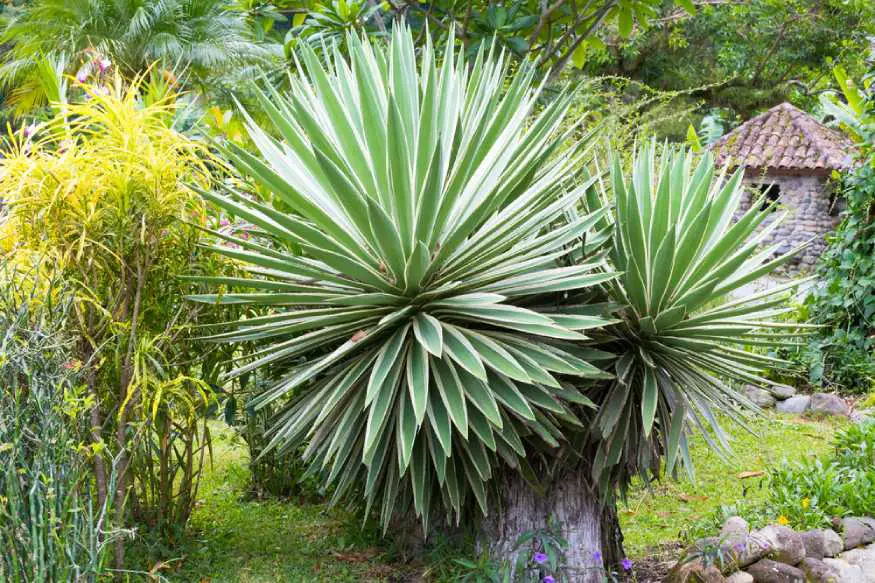
Botanical Name: Agave americanaAlso Known As: American agave, Maguey, Mexican soap plant
The century plant is well known for its bloom. Yes “bloom,” singular. The common name for this big, beautiful succulent is “century plant” because it only blooms once in its life.
Technically that lifetime is more likely to be 10-25 years, not 100, but who’s counting? Even without annual flowers, this handsome and drought-tolerant plant is perfectly suited to hot, dry landscapes, and if you’re patient you may get to see its one and only flower spike, which can reach as tall as thirty feet.
Holiday Cactus (Christmas Cactus)
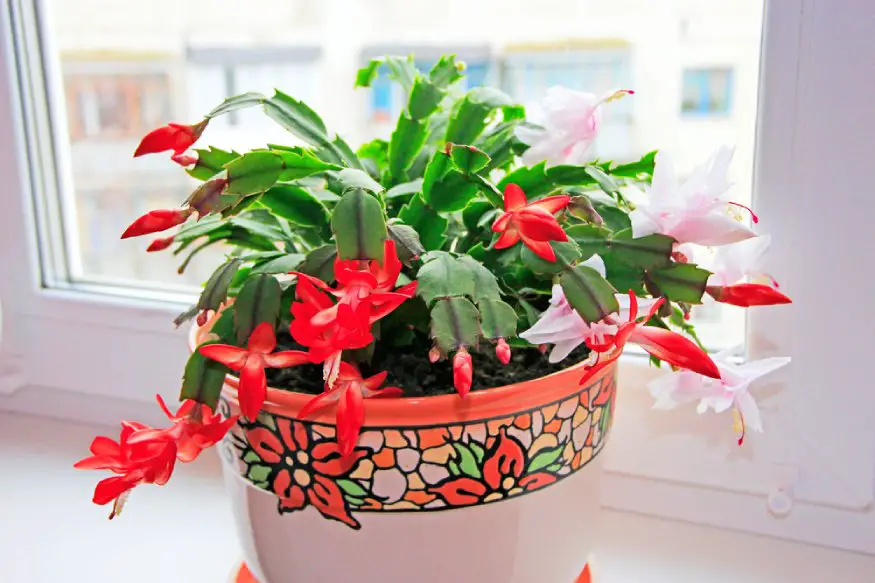
Botanical Name: Thanksgiving cactus (Schlumbergera truncata)Also Known As: Christmas cactus (Schlumbergera bridgesii), Easter cactus (Schlumbergera gaertneri)
Holiday cacti are odd plants from the rainforest not the desert. Also, they are one of the few succulents that people keep for the flowers rather than the leaves.
The prolific flowers come in many shades, including fuchsia, red, apricot, white, and rose. Even though the name comes from the time of year when they bloom most often, you can expect it to bloom for months.
What triggers flowering in these beautiful houseplants is the onset of winter. You can recreate that environment for an indoor potted plant by:
- Putting the plant somewhere cool (around 55 degrees Fahrenheit at night, 60 to 65 degrees during the day)
- Long overnight periods of darkness (around 12 hours).
Once this plant buds it becomes finicky. As much as possible, don’t move it or put it in drafts or places with big changes in temperature to keep the flowers safe.
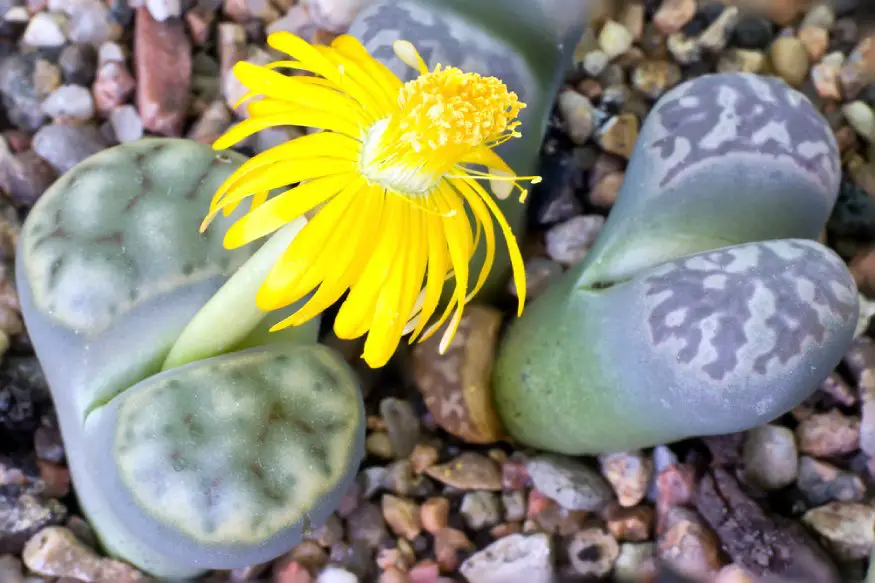
Botanical Name: LithopsAlso Known As: Pebble plants, Stone face, Cattle hoof
Living stones are cute as buttons, shaped like smooth little nubbins, but they also flower in the fall or early winter. They are a part of the fig/marigold family, but the flower looks a lot like a dandelion that may or may not be scented. It also opens and closes throughout each afternoon.
When a plant blooms, it makes a new body so that the old one can dry out and become a blanket for the winter.
For more information on Lithops, check out our guide to growing living stones.
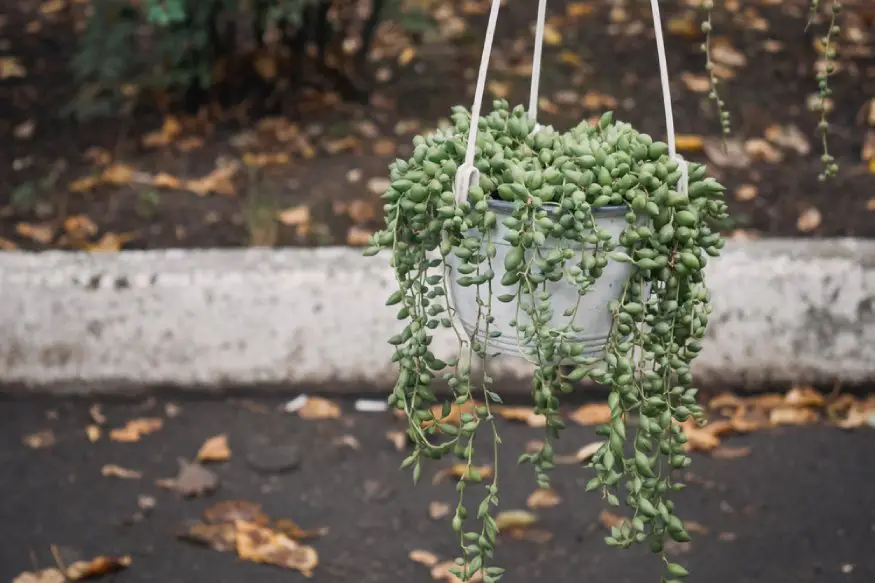
Botanical Name: Curio rowleyanusAlso Known As: String of beads, String of peas
People love Curio rowleyanus for its pretty trailing leaves, which is why it’s called “string of peas.” This succulent also has some interesting flowers.
The flowers are white and pom-pom shaped, with colorful stamens and anthers. They smell like cinnamon. In order to encourage flowering, keep the plant in cool dry conditions over the winter. Unfortunately, it is poisonous and thus not the best choice if you have kids and pets.
For more information about String of Pearls, check out our guide to growing Curio rowleyanus.
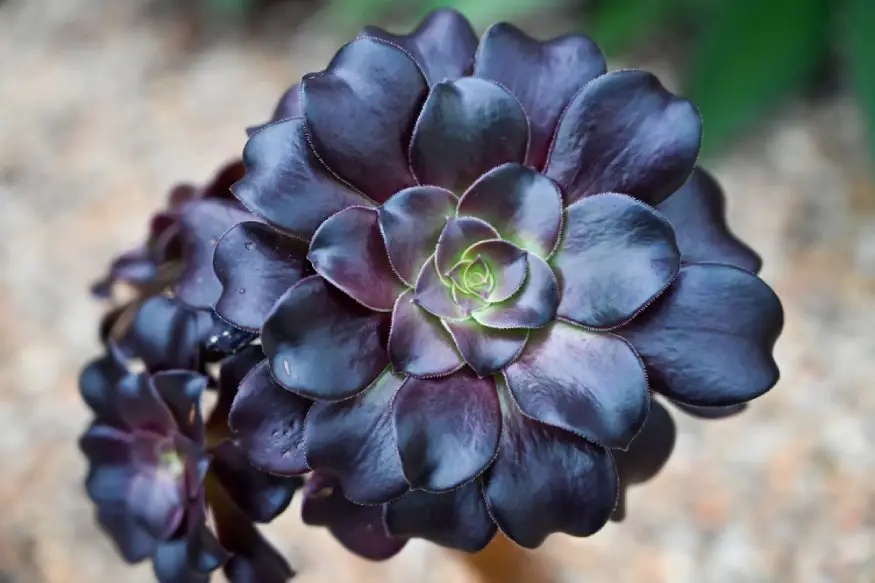
Botanical Name: Aeonium aboreum ZwartkopAlso Known As: Black beauty, Black Aeonium
If you like flowers and succulents but would rather be goth than cute, the black rose aeonium might be perfect for you. Yes, this is a flowering succulent, but it grows in the winter and goes dormant in the summer, just like any good goth succulent. It has big black rosettes on long stems.
That is, it’s a group of leaves that looks like a flower, but it’s so creepy-cool that it doesn’t really matter what scientists would call it. And each rosette can only bloom once before it dies. But the plants grow in a cluster, so not all of them flower at once, so your plant that looks like a zombie will live on.
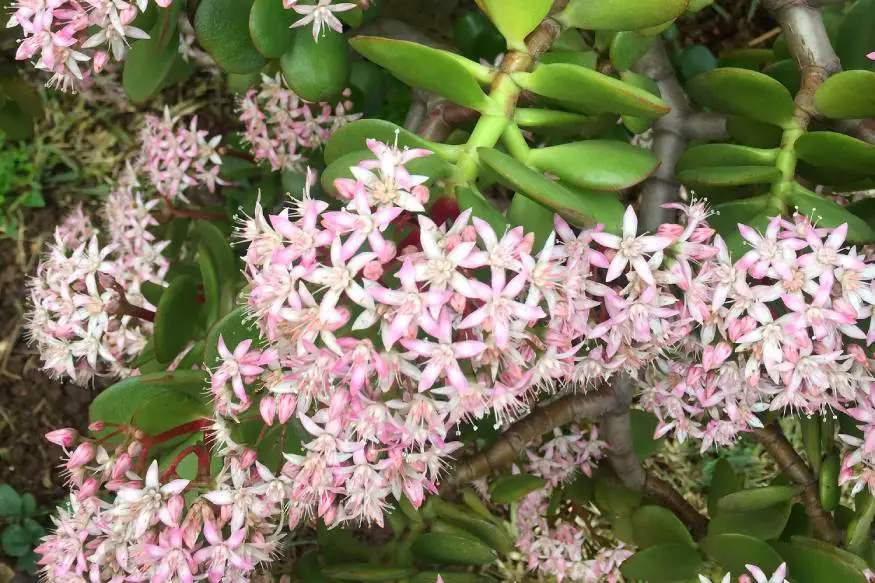
Botanical Name: Crassula ovata ‘Pink Beauty’Also Known As: n/a
Jade is one of the most popular following succulents. This is because it can produce clusters of lovely star-shaped flowers reminiscent of jasmine when it matures. Pink beauty is a particular stand-out among jades.
The leaves are primarily green but develop attractive rosy edges. The flowers grow in groups at the ends of the stems, making the plant look like a pretty pink fireworks set off in the air when it’s in full bloom. It can be grown outside in the right climate (three to five feet tall), but it also does well in pots.
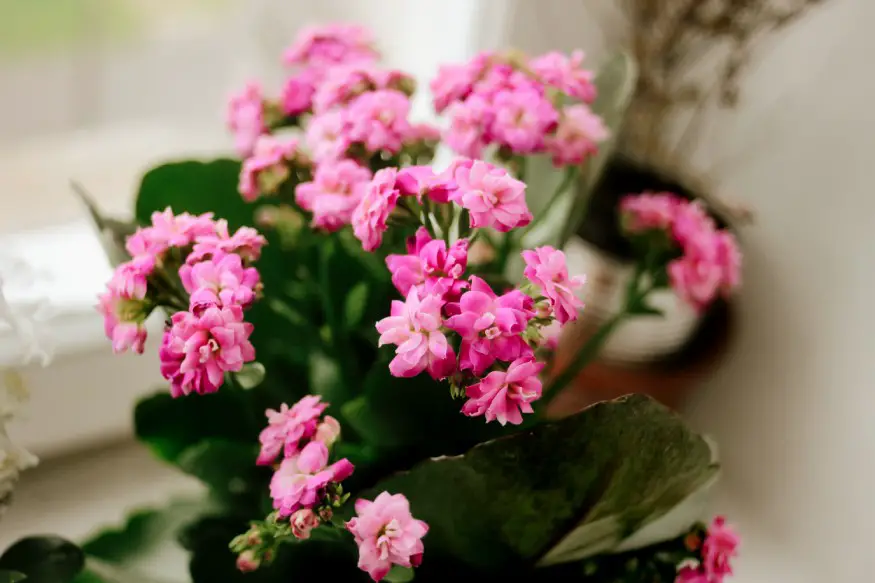
Botanical Name: Kalanchoe blossfeldianaAlso Known As: n/a
It is easy to find kalanchoe in the flower section of most supermarkets, making it the most popular flowering succulent. It is also one of the best succulents to grow if you want flowers.
Unlike most succulents, which are grown for their leaves and flowers only occasionally, kalanchoes have a dense green base with larger clusters of four-petaled flowers on top. Numerous variations exist, so you can find kalanchoe in fuchsia, red, orange, yellow, pink, and white.
Since they are so inexpensive and widely available, some people treat kalanchoe like annuals, buying them for a season of blooms and then tossing them out. However, they can be encouraged to rebloom by ensuring they experience the long dark nights they would in the wild.
Long nights (14-16 hours) at moderate temperatures should do the trick. Keep in mind that kalanchoe are toxic to many animals, particularly dogs.

Botanical Name: Epiphyllum oxypetalum
Also Known As: Climbing cactus, Dutchman’s pipe cactus, Queen of the Night
Orchid cactus is a bit of a misnomer. These plants don’t live in the desert; they’re epiphytic tropical succulents, which means they get most of their water and nutrients from the air in the humid jungle instead of their roots. They also have unusually long, trailing leaves.
There are many varieties and hybrids, so their flowers can be red, orange, yellow, pink, purple, or white. Epiphyllum oxypetalum specifically has aerial roots and abundant large, fragrant, white flowers. This succulent is sometimes called “queen of the night” because its flowers open at night and are at their best around midnight.

Botanical Name: Euphorbia miliiAlso Known As: Christ plant, Christ thorn
Euphorbia milii is an eye-catching evergreen succulent shrub in the spurge family. Crown of thorns has a stem and branches that are covered in sharp spikes. This is where the religious stories about it come from.
The flowers look a bit like hydrangea flowers and are typically red, but some hybrids are pink or even white or yellow. While Euphorbia milii specifically grows to a few feet, there are many hybrids, including dwarf and large varieties.
It is very drought tolerant and easy to grow in appropriate growing zones. However, it is poisonous to people and animals besides being dangerously spiky.
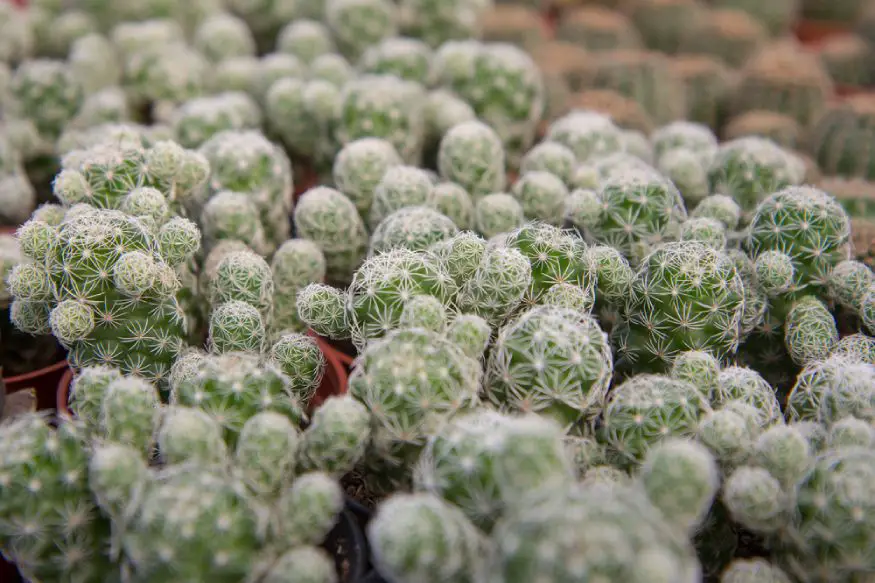
Botanical Name: Mammillaria vetulaAlso Known As: Pincushion cactus
Pincushion cactus is a very common houseplant, with hundreds of species and hybrids. One type, the thimble cactus, only gets about six inches tall, but it grows in groups that cover a lot of ground and look a lot better than you might think for such a small succulent.
They work well in pots, clustered with other taller succulents. Thimble cactuses have radial spines and white wool. The flowers are typically a creamy yellow shade, but some cultivars have bright fuchsia pink flowers.
In order to get this cactus to flower, it is important to provide plenty of bright sunlight and warmth throughout the spring and summer, and then cooler temperatures in the winter.
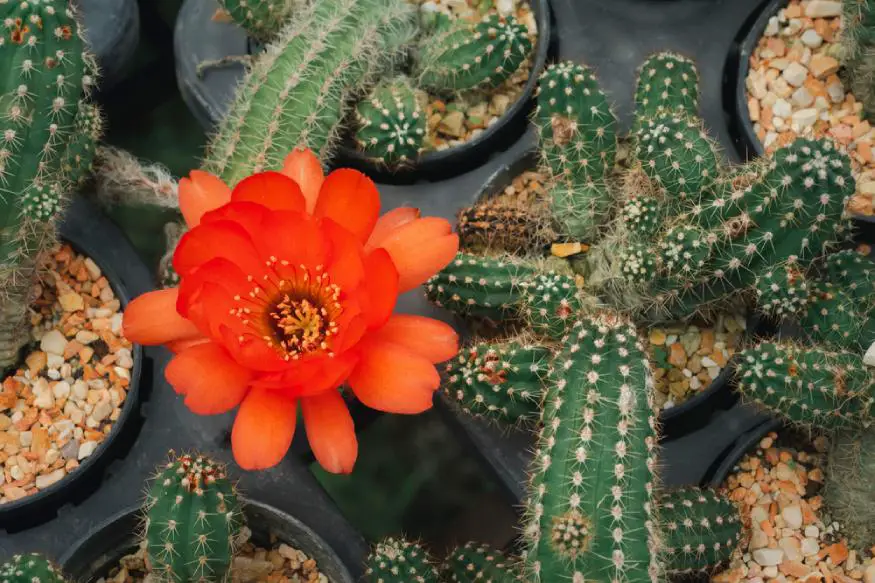
Botanical Name: Echinopsis chamaecereusAlso Known As: n/a
This cute, low-growing cactus has a dense bunch of finger-like stems that look a lot like pickles. However, their growth pattern seems to look like a bowl of peanuts in their shells to some people.
It can be grown in hanging planters because the stems grow up and down and cross each other. The stems have soft white bristles.
From late spring to early summer, the peanut cactus might have a big bloom or two of bright red flowers. The flowers are large (relative to the cactus), up to a couple of inches in diameter.
It likes full sun in summer, but cooler temperatures and long nights in the winter. But unlike some succulents that are more likely to bloom if they are grown outside, a peanut cactus that is only kept indoors is likely to put on a great flower show as long as it gets enough sunlight and stays warm enough.
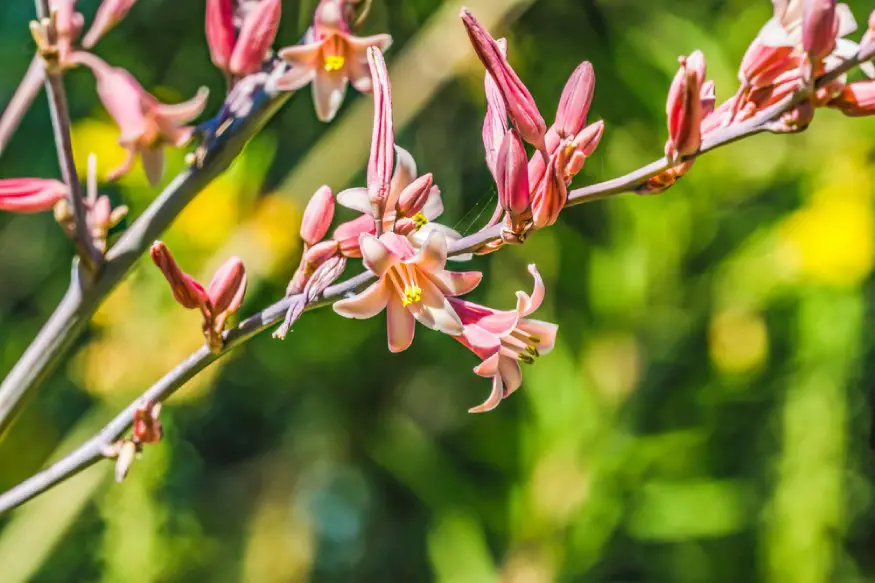
Botanical Name: Hesperaloe parvifloraAlso Known As: Hummingbird yucca
This Texas and Mexico native is both a people pleaser and a hummingbird and butterfly pleaser, with a lot of selling points.
In suitable climates, it can bloom repeatedly throughout most of the year. As you might expect from a plant that hummingbirds and butterflies like, this one has five-foot flower spikes with reddish pink trumpet-shaped flowers that are tubular and pink.
In addition to being attractive to pollinators, these are drought tolerant and resist deer and other pests, making them a great landscape plant in hot climates. They are also capable of surviving in dry climates with well-draining soil in areas as cold as USDA growing zone 6.
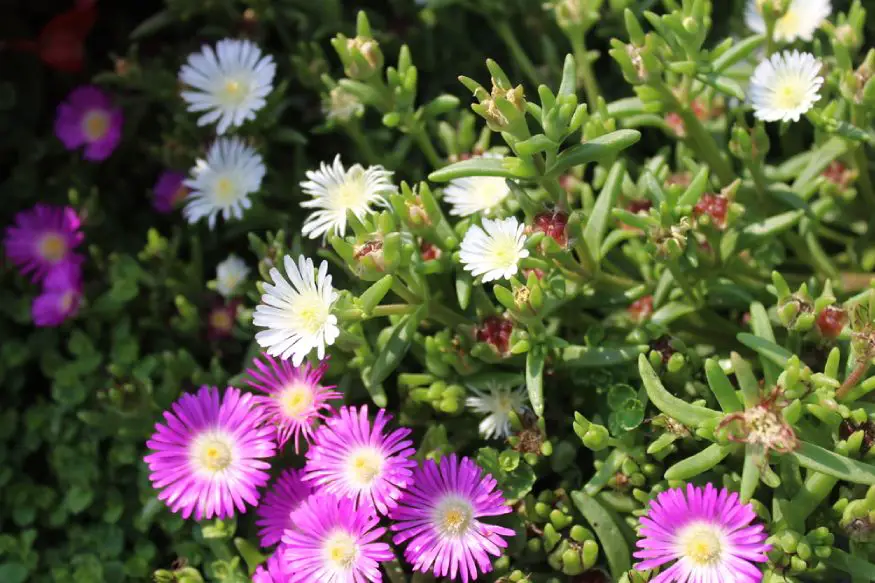
Botanical Name: Delosperma cooperiAlso Known As: Cooper’s Hardy Ice Plant
Ice plant is a beautiful ground-cover succulent that forms a soft bed of fleshy leaves. In the summer, it tops them with a blanket of colorful daisy-like flowers that attract pollinators. It forms a compact ground cover that out-competes most weeds.
The flowers close at night and open during the day. They come in various colors including red, white, yellow, pink, or copper.
Ice plants are accessible for many gardeners, because instead of only being viable in hot climates, some varieties of ice plant can be grown in USDA growing zone 6 to 9, as long as the environment is fairly dry. However, that’s not how this plant got its nickname.
The name ice plant is actually the result of the fact that some non-winter-hardy species have leaves that excrete calcium, which makes the leaves look like they are covered in ice crystals.
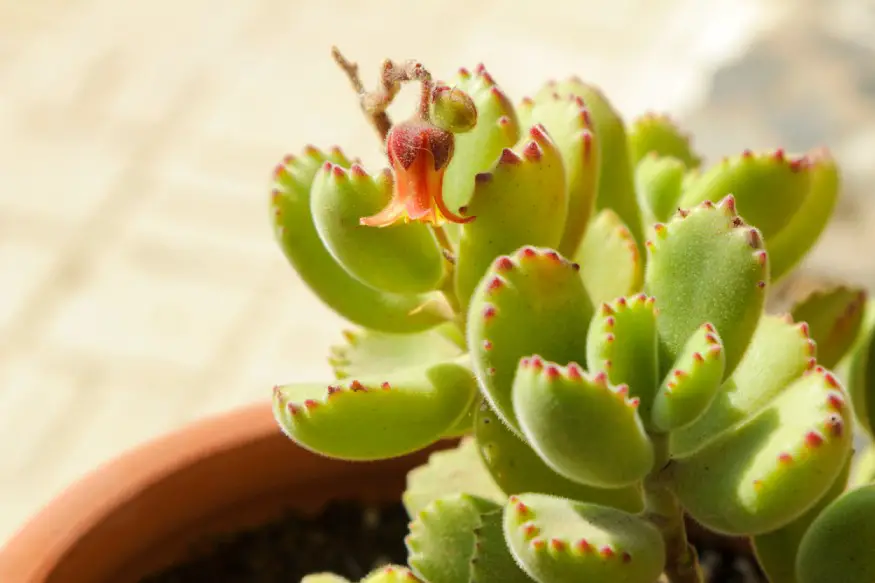
Botanical Name: Cotyledon tomentosaAlso Known As: Kitten paw
This is one of the cutest succulents around. Bear paws have chubby rounded furry leaves with red notches on the ends like little bloody claws. The reddening results from making sure this plant has a lot of sun.
Note: This plant needs a lot of direct sunlight to stay healthy, turn its leaves red, and make small clusters of yellow or orange flowers.
Even though these aren’t the most beautiful flowers, the way the flowers and leaves look together is very pretty. Check out our Cotyledon tomentosa growing guide to learn more about how to give your bear paw the right conditions to flower.
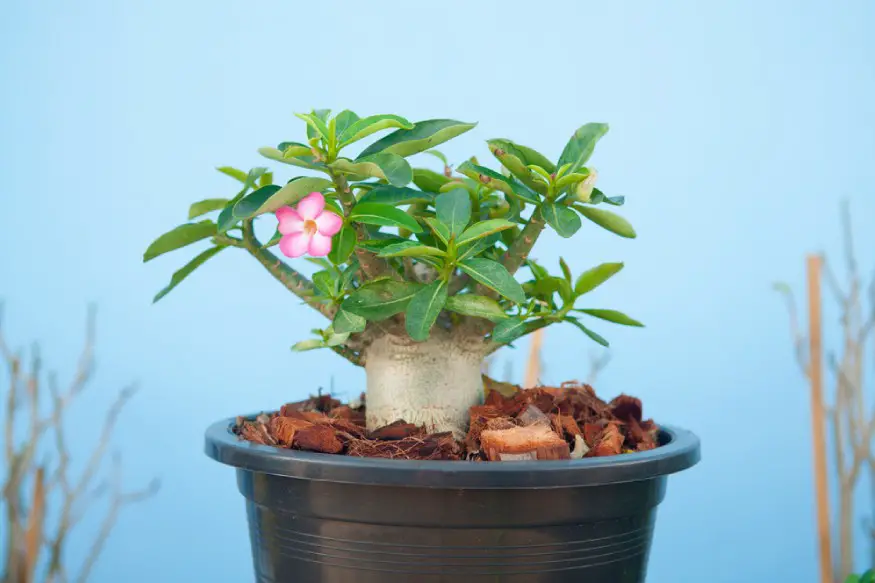
Botanical Name: Adenium obesumAlso Known As: Desert azalea, Mock azalea
This succulent is as pretty as it is poisonous. It grows like a bonsai tree, with succulent leaves on a thick-stemmed shrub. Its remarkably pretty flowers are pink or reddish, sometimes with a white center.
As the name desert rose suggests, these plants prefer a warm to hot, dry climate and, like most succulents, loose, well-draining soil. Grown indoors, it is likely to need a grow light to thrive, as it strongly prefers a lot of sun.
The plant gives off a poisonous gas, and the whole thing is poisonous, so don’t keep it if you have pets or small children.
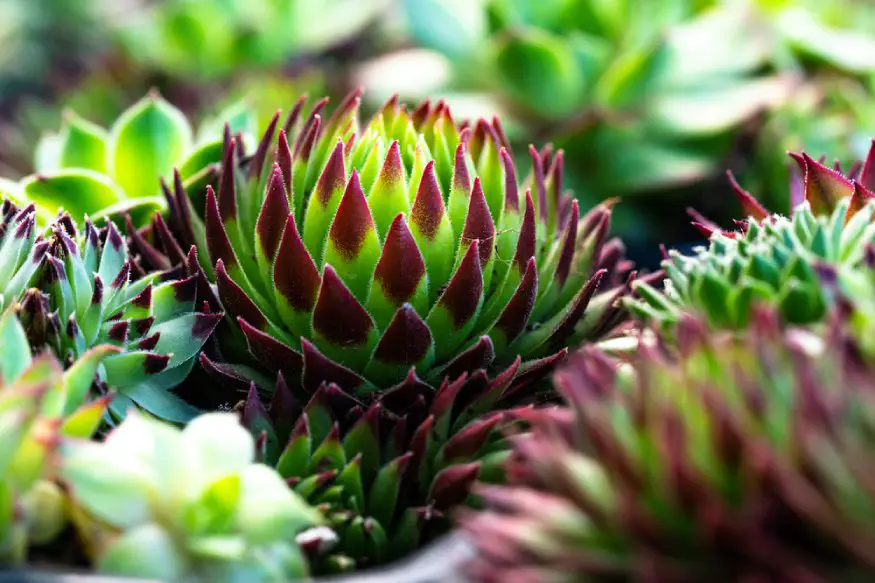
Botanical Name: Echeveria agavoidesAlso Known As: Wax agave
This plant’s common name comes from the red tips it develops when given access to sufficient sunlight. If you keep Echeveria agavoides in a pot inside and give it enough sunlight in the spring and summer, it will bloom in the summer.
The plant produces reddish flower stems with small, attractive bi-color flowers. The flowers are typically pink or orange at the base and yellow at the petal tips.
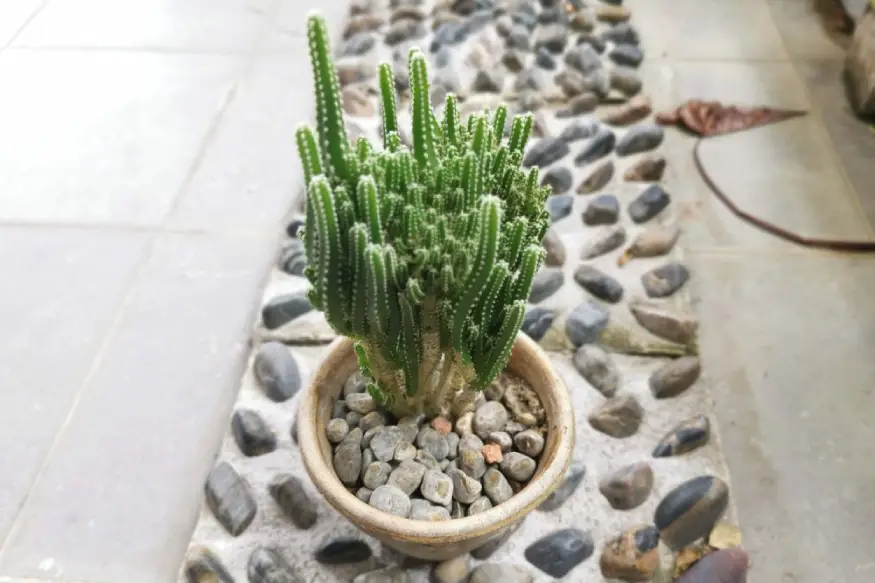
Botanical Name: Acanthocereus tetragonusAlso Known As: Triangle cactus
Give the fairy castle cactus a try if you live in growing zones 10–11 and like a tricky plant.
When grown outside in the right climate zone, this cactus will only flower when it is healthy and fully grown, after about ten years of growth. However, the flowering will not be consistent, and the blossoms mainly open at night.
However, if you can wait, this plant is quite cool in flower. The blossoms are white, daisy-like, and quite large for a succulent. This cactus is cute enough to grow indoors if you don’t live somewhere where it can be grown outside. Just give up on growing your flowers.
Note: Garden stores frequently sell small fairy castle cacti with colorful flowers glued on top. You are free to like the way they look, but don’t be fooled—they are not part of your fairy castle cactus.
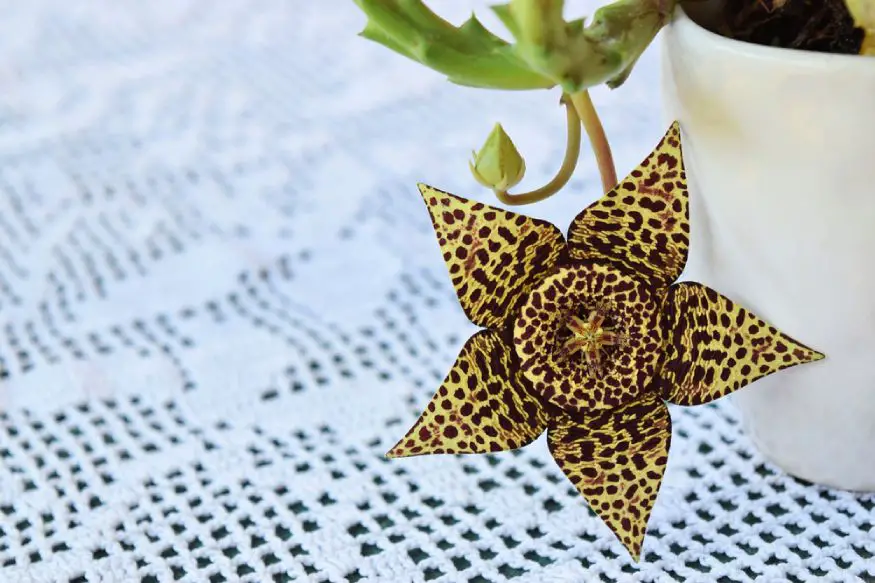
Botanical Name: Orbea variegataAlso Known As: Star plant, Star flower, Carrion cactus, Carrion flower
You might think this suggestion stinks, but hear us out. True, the flowers of the unkindly nicknamed carrion cactus smell like rotting meat and attract less appealing pollinators (flies rather than bees and butterflies). However, the flowers are also remarkably beautiful, like a starfish and an orchid made a baby. The Starfish plant is a leafless succulent, and the flowers bloom in summer.
This plant is related to dogbane, and can be invasive in some environments, so practice good plant hygiene and keep the little stinker contained. It is also happy growing in a west-facing window. You can always blame the smell on the dog.
10 Beautiful Succulents that Look Like Roses
FAQ
What is the name of the succulent that looks like a flower?
What kind of succulent has flowers?
How to take care of rose succulents?
What is a pink succulent that looks like a rose?
- The Ultimate Guide to Growing Strawberries in Raised Beds - August 8, 2025
- No-Dig Garden Beds: The Easiest Way to Grow a Beautiful Garden - August 6, 2025
- How to Protect and Preserve Wood for Raised Garden Beds - August 6, 2025

